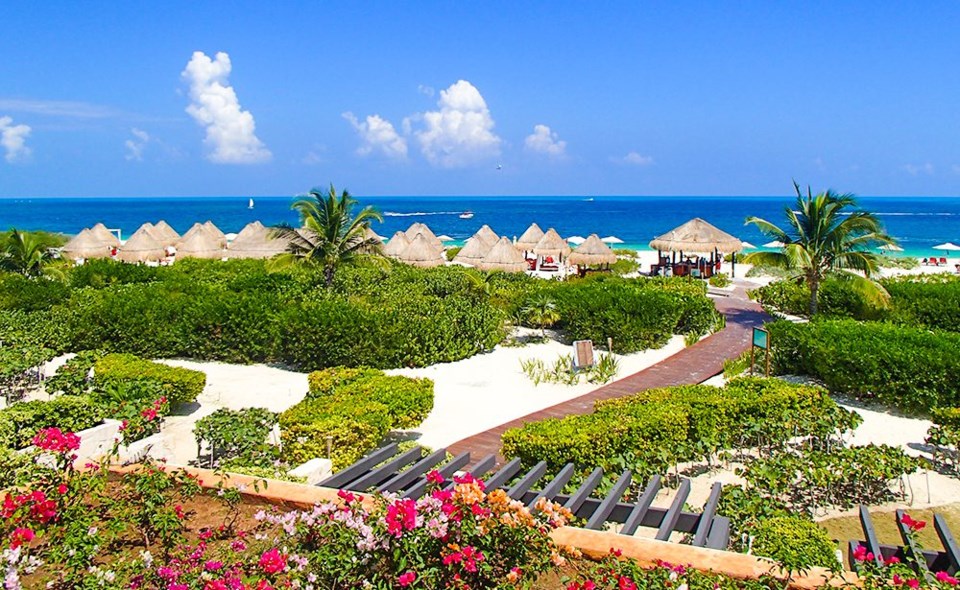Mexico is welcoming back Canadian travelers. At the request of the Canadian government, four Canadian airlines suspended flights to Mexico for much of the first half of this year as a preventative measure to stop the spread of the coronavirus. But flights resumed in the summer, and their frequency has since increased.
There is no need to provide a negative PCR test or quarantine on arrival in Mexico, although most resorts request that guests complete health questionnaires.
Getting home is less simple, and more expensive. Canadians need a negative Covid-19 PCR test taken 72 hours or less before their return flight. Expect to pay around $150 U.S. per person for the test. Unvaccinated Canadians will need to isolate for 14 days once back in the country.
As of mid-October, Mexico had 3.7 million cases of Covid-19 and nearly 283,000 deaths, according to CNN, but some Mexican health officials have suggested that actual fatalities approach 540,000. President Andrés Manuel López Obrador has come under fire for taking a cavalier approach to the virus, which critics say resulted in high death and infection rates.
The Delta variant fueled a third wave of infections this past spring and summer, which slammed two of Mexico’s most popular tourist destinations: Los Cabos on the Pacific, and Cancun on the Caribbean. But by mid-October, the threat had subsided, and almost all Mexican states were categorized as yellow or green in terms of pandemic restrictions. Quintana Roo (the Mexican province which is home to resort centres Cancun, Cozumel, Playa del Carmen, and Tulum, all part of the “Mayan Riviera”), is currently listed as green, the lowest level of concern.
The risks didn’t deter some two million Americans (76 percent of all international travellers by air who visited Mexico) in the first four months of 2021, according to Mexican government statistics. In 2020, when the pandemic spiralled wildly worldwide, only 175,000 visitors made the trip. It helps that Mexico is affordable (Americans get nearly 20 Mexican pesos to the dollar), and is a short flight from many American airports.
With four million visitors each year, Cancun is by far Mexico’s most-visited seaside destination. The economy of the Mayan Riviera depends almost entirely on tourism, and major hotels have implemented strict sanitary protocols. All hospitality staffers are masked, unlike the vast majority of resort visitors. The Mexican tourism industry has highlighted that any new infections are occurring amongst unvaccinated young locals, and not travellers.
Historically, the Mayan civilization lasted for almost 3000 years, and was spread over several modern-day Mexican states in the southeast of the country, as well as the Yucatan and Quintana Roo. The Mayans worshipped the god Quetzalcoatl (the feathered serpent), and like the Aztecs of central Mexico, waged war on their neighbours to procure slaves for human sacrifice. Many of the important settlements of the Mayan empire were located in the interior of the Yucatan Peninsula at places like Chichen Itza, whose ruins have been reconstructed as tourist attractions. The main coastal cities were located at Tulum and Cozumel.
Spanish conquistadors like Hernán Cortés arrived in Quintana Roo in the early 1500s, intent on converting the Mayans to Christianity and plundering the riches of the region. They brought with them Old World pathogens like smallpox, influenza, and tuberculosis that decimated the Mayan population.
In 1821, Mexico gained its independence from Spain, thanks in part to a young lawyer named Andrés Quintana Roo, who was instrumental in shaping Mexico’s formal declaration of independence. However, several territories — Texas, Guatemala, and the Yucatan Peninsula — rejected the idea of a centralized government in Mexico City, and waged guerrilla warfare until they were forced into submission.
Fast-forward to 1974, when the area was designated as a free state, and the tourism potential of the powder white sands, warm waters, and Mayan ruins was recognized. A construction boom occurred in the 1980s, and by the time 1994’s Free Trade Agreement was rolled out, the Mayan Riviera was well-established as popular international tourist destination.
While Cancún features luxury hotels, pristine beaches, and a party atmosphere, some tourists prefer the quieter, more relaxed vibe of Isla Mujeres (“Island of Women”), located 13 kilometres and a 20-minute ferry ride away. It is a haven of Mayan culture and history. In ancient times, Isla Mujeres was devoted to Ixchel, the Mayan goddess of wealth, health, and contentment. Spanish conquistador Francisco Fernandez de Cordoba landed at Isla in 1517, and upon discovering many female-shaped idols, coined the island’s name.
Playa del Carmen boasts a classy European-style nightlife, while Cozumel has been a scuba divers mecca since 1961, when renowned marine explorer Jacques Cousteau dived on the island’s Palancar Reef, and proclaimed it to be one of the world’s best underwater sites. Tulum is the southernmost city in Quintana Roo, and was an important walled city in the Mayan civilization, with many temples and architecturally significant structures. It is also noted for its cenotes (sinkholes) and underground cave systems.
The high season on the Mayan Riviera is usually between November and April. Currently, hotel occupancies hover around 65 percent, but the pundits in the travel industry are confident that rooms will fill quickly as the pandemic wanes and vaccination levels increase. ◆



